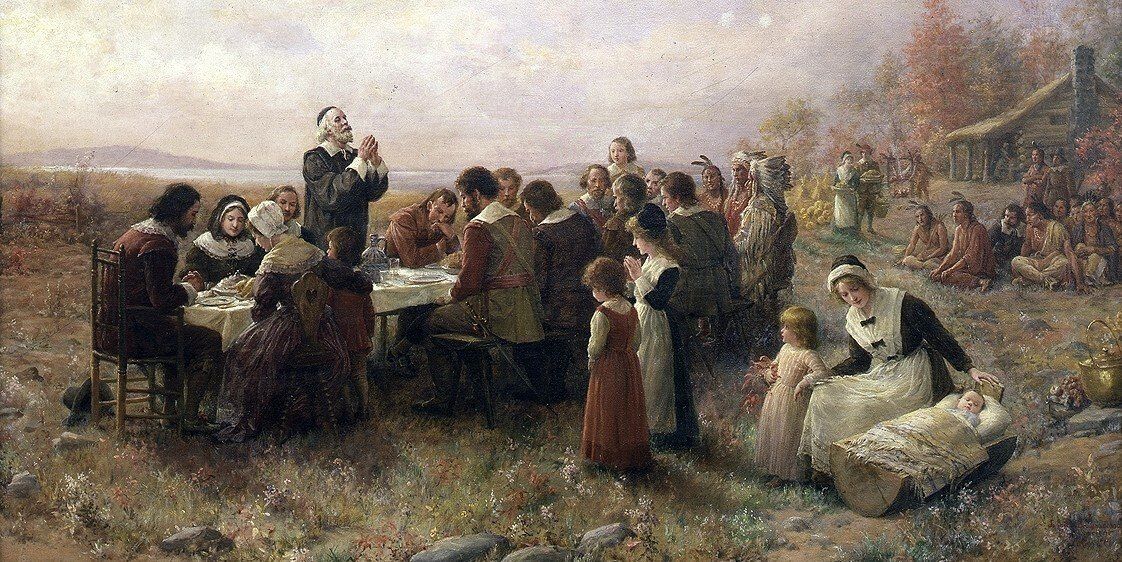To learn more about Christopher Columbus, consult chapter 1 of The American Story, available in the CTF Bookstore.
You can also contact us to schedule speaker Ryan Cox and his Our American Founding program.
From the age of 10, he spent much of his life at sea. He was a fearless explorer, persuasive entrepreneur, and a dependable ally. Above all, he was passionate about Scripture and the cause of Christ; his name means “bearer of Christ”. Might that be the reason he is demeaned and criminalized in many circles today?
Cristoffa Corombo (Genoese), better known as Christopher Columbus (English),¹ was born in 1451, the oldest of 5 children. He married Filipa Moniz Perestrelo in 1479, and they had one child named Diego.² Raised in the home of a wool weaver who also owned a cheese stand, Christopher became a messenger and ship’s boy at age 14. He then began business apprenticeships for some wealthy families when he was 22, all of which led to extensive sailing. When he was 25 and on his first trip into the Atlantic, the five Genoese³ ships came under attack by French privateers. Columbus’ ship eventually burned, resulting in a 6-mile swim to shore. The very next year, one of his trips took him all the way to Iceland.⁴
Despite his active business schedule, Columbus was a prolific reader of history, geography, and astronomy; he also learned Latin, Castilian, and Portuguese.⁵ In 1484 at the age of 33, he and his brother Bartolomeo presented to Portuguese King John II their detailed plan called “Enterprise to the Indies”. Since the Muslim conquests in the Middle East had shut off the Silk Road and the key port of Constantinople, a new trade route to the East had been sought. The endeavor to sail around the world, though, was denied at the advice of the king’s experts.⁶ Columbus made another pitch to the king in 1488. He was denied again partly due to Portuguese mariner Bartolomeu Dias returning home from sailing around the southern tip of Africa. This appeared to everyone to be the best way to reach the East instead of a risky exploration across the Atlantic.⁷
Columbus took his plan in 1486 to King Ferdinand and Queen Isabella of Spain. They, too, on the advise of their experts rejected Columbus’ plan. His brother went on to England to see if Henry VII was interested. Columbus even sought support from France. Finally, after Ferdinand and Isabella’s forces had expelled the last Muslim forces from Spain, they turned their attention to exploration and expansion, and granted Columbus’ request on April 17, 1492.⁸
The story as portrayed by modern academia, media, and culture goes something like this:
Thankfully, these accusations are far from reality.
At the age of 41, Columbus set out on August 3, 1492 from Spain with three ships (Niña, Pinta, Santa Maria). He was NOT seeking to prove the world is round. In fact, it is a common myth that people in his day believed Earth was flat.
The oldest surviving antique globe, called the Erdaphel (German for “earth apple”), dates to 1491, before Columbus’ trip.⁹ Crates of Mallus, Stoic philosopher from Cilicia, is believed to have made a globe of Earth around 150 B.C.¹⁰ Additionally, Pythagoras (6th century B.C.), Aristotle (4th century B.C.), Eratosthenes (3rd century B.C.), Ptolemy (2nd century A.D.), and possibly the Phoenicians in the 6th century B.C. and the Brahmans of India in the 4th century B.C. all described Earth as spherical.¹¹
Aristotle noted the different observable constellations depending on one’s location on a globe. He also emphasized how easy it is to see the curvature of Earth’s shadow during a lunar eclipse and mentioned estimations made by mathematicians as to Earth’s circumference.¹² Greek astronomer and director of the Library of Alexandria, Eratosthenes would calculate Earth’s circumference¹³ around 240 B.C. within -2.4% to +0.8% of today’s calculations.¹⁴
In fact, the “discovery” of Earth’s spherical nature is a mystery to historians. It is a common understanding in antiquity, for which there is no explanation – as if humans have always known. Even in many if not most ancient depictions of Earth as flat, Earth is still drawn in a circular shape. In any case, it was a universal understanding in Columbus’ world that Earth is spherical.
What, then, gave rise to the legend of Columbus sailing to prove the Earth is round? The conflict thesis of the 19ᵗʰ century was developed by ill-designing men rewriting parts of history, seeking to justify the newly developed tenets of evolution. The thesis, developed by John Draper (1811-1882) and Andrew White (1832-1918), teaches that religion and, more particularly, Christianity had held back scientific progress during the “Dark Ages.” The thesis claims with the Enlightenment and science came progress and technologies as opposed to the superstitions of religion, such as a flat earth belief, which they claim was held by the church.
This is absolutely false, yet it did not stop Washington Irving (1783-1859)¹⁵ from publishing in 1828, A History of the Life and Voyages of Christopher Columbus, in which Irving fabricated the notion that Columbus’ voyages were to show the superstitious flat-earthers of his day that the Earth was round. The book even went so far as to make up disputes between Columbus and religious authorities as well as fears from the ship’s crew. The accusations were fraudulent and fanciful, but they supported the current narrative and continue to support the evolutionary worldview’s intrusion into the realm of history as well as science.
The same is true for many of the accusations regarding Columbus being a greedy, racist, imperialistic conqueror. The man was very devout in his faith, which makes him an even greater target for the enemies of truth. Did some atrocities happen amongst the ships and crews during the voyages? Yes. But what are the untold aspects of Columbus’ efforts?
For example, in attempting to portray Columbus as an imperialist seeking slaves, History.com quotes him as writing of the natives, “They would make fine servants… With fifty men we could subjugate them all and make them do whatever we want.”¹⁶ We found it suspect they provided no reference. Turns out, this is not what Columbus wrote. Rather, he penned in 1492:¹⁷
Thursday, 11 October… As I saw that they were very friendly to us, and perceived that they could be much more easily converted to our holy faith by gentle means than by force, I presented them with some red caps, and strings of beads to wear upon the neck, and many other trifles of small value, wherewith they were much delighted, and became wonderfully attached to us.. It appears to me, that the people are ingenious, and would be good servants [subjects to the crown as everyone else in the kingdom] and I am of opinion that they would very readily become Christians, as they appear to have no religion. They very quickly learn such words as are spoken to them. If it please our Lord, I intend at my return to carry home six of them to your Highnesses, that they may learn our language.
Sunday, 14 October… I do not, however, see the necessity of fortifying the place… I could conquer the whole of them with fifty men, and govern them as I pleased.
As one quickly realizes when reading Columbus’ actual words, he admired the natives, thinking they would be a great people to welcome into the Spanish empire, hoping they would all become Christians. He even tells the king and queen that there is no need to build any fortifications because of how kind and peaceful they are.
The atrocities took place after he left by the men he placed in charge. When he returned and attempted to right the wrongs, the men arrested Columbus and sent him back to Spain with bogus charges. He would be found not guilty and was allowed to continue his voyages.
We could continue for many more pages correcting the many false accusations brought against Columbus by today’s revisionists promoting their evolutionary worldviews. [See below for further resources.] For now, we pray you heed the warning that made up stories taught as fact long enough to an uneducated or apathetic population will result in evolutionized people. Be countercultural; investigate the claims; seek the facts; ask tough questions; and do not exchange the truth of God for the lie (Romans 1:25).


All Rights Reserved | Creation Truth Foundation, Inc.
Site hosting & maintenance by
Adam Wills Marketing